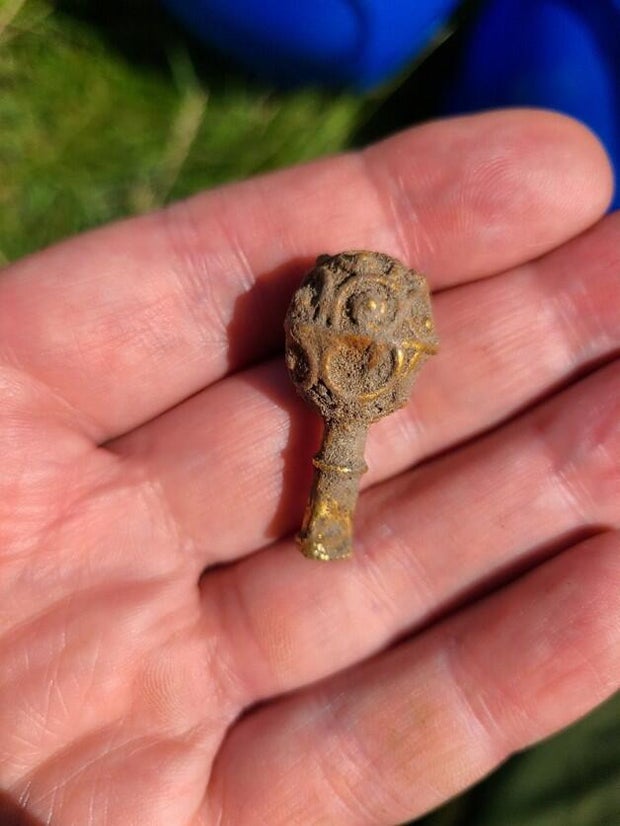An American archaeology student on her first-ever dig found a rare piece of 9th-century gold.
Yara Souza, who is from Orlando, Florida, is an international student at Newcastle University in the U.K. She was part of a July excavation in Redesdale, Northumberland, in northeastern England when she made the discovery about 90 minutes into her excavation, the university announced.
“I couldn’t believe I’d found something so quickly into my first ever excavation,” Souza said in a press release. “After I’d had to miss Birdoswald last year, it was amazing to discover something that hasn’t been seen for more than a thousand years, I was really geeking out over it.”
Birdoswald Roman Fort is another excavation that Newcastle University students participated in last year.
Portable Antiquities Scheme/Newcastle University
According to the university, the early medieval object – about 1.5 inches long with a decorative finial at one end – was buried close to the route of Dere Street, a major Roman road which ran between York, England and Edinburgh, Scotland. Dere Street was still used after the fall of the Roman Empire and went on to become part of the modern-day A68 highway.
The archaeology students, alongside archaeologists from North East Museums, were investigating the location as it was the site of a chance discovery of a similar object in 2021.
Portable Antiquities Scheme/Newcastle University
“This is an exciting find of exceptional quality,” said Newcastle University archaeology professor James Gerrard. “We know that Dere Street continued to be a major thoroughfare long after the Romans and it’s clear from this discovery that high status people were using it.”
According to the university, gold was considered high status and was only used by the elite. Experts involved in the excavation believe the object found by Souza and the one discovered in 2021 could have had a religious or ceremonial use.
“It is possible that this pair of objects may have been deliberately buried,” Gerrad added.
The piece will be further analyzed and could eventually go on display at a local museum.


